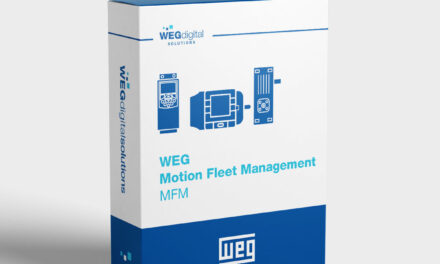 Energy savings are just one of the advantages of synchronous motors. Marek Lukaszczyk from WEG Electric Motors looks into the technology, the benefits, and the potential applications
Energy savings are just one of the advantages of synchronous motors. Marek Lukaszczyk from WEG Electric Motors looks into the technology, the benefits, and the potential applications
Synchronous motors are increasingly being used in high power, heavy load applications due to their ability to reduce electrical energy costs and improve energy efficiency by correcting power factor on the motor power supply. The size and nature of the applications in which they are used mean the energy savings can be considerable, and can often result in fast payback of the motor expenditure.
Of additional benefit, however, synchronous motors also provide high torques and constant speed under load variation, resulting in low operating and maintenance costs. As a result, such motors are used in a wide range of applications, including: on crushers, mills and conveyor belts in mining and quarry operations; fans pumps and compressors in steel plants; pulp and paper extruders; chippers and de-barkers in wood processing; sewage system pumps; large compressors and fans in chemical and petrochemical applications; mills and crushers in cement works; and water injection pumps on floating oil platforms.
The higher levels of efficiency, reduced size and higher output rating capacity mean that synchronous motors can replace DC motors in high performance applications. In addition, in a number of instances a motor with lower torque values can be actually applied. This brings a positive reduction in motor starting current, resulting in fewer problems with the electric system during starting, and a reduction in mechanical stresses from the motor windings.
Efficiency and speed
Synchronous motors have better efficiency and speed accuracy than induction motors. But, induction motors are of a simpler design, making them less expensive for a given power level, at power outputs up to 10 kilowatts. Above this figure, however, the higher efficiency of synchronous motors delivers lower operating costs.
Not only are synchronous motors more superior at converting electrical energy into mechanical power, but they can be designed for high efficiency operation across a broad speed range, providing significant energy saving across a wide variety of loads. In addition, for applications requiring high torque – such as crushers or extruders – breakdown torque with synchronous motors can be as much as five times higher than the rated torque.
Synchronous motors also have the ability to improve stability in VFD applications, so those with variable speed are recommended for applications with high torque, low speed and wide speed adjusting range. Depending on load and environment characteristics, motor construction for such applications can be with or without brushes. These motors can operate at any speed range from zero to maximum speed, maintaining stability independent from load variation, a factor of paramount importance on equipment such as laminators and plastic extruders.
Meeting demands
Synchronous motors require a DC power supply to power the field winding (rotor winding), which is achieved through a brushless rotating exciter
(on brushless versions) or via a static exciter on motors with brushes. WEG synchronous motors supplied with static exciters are fitted with slip rings and brushes that allow current powering of the rotor poles through slipping contacts. The DC power supply for the poles is derived from an AC/DC converter and static controller. The static exciter is frequently used on VFD applications.
Synchronous motors with brushless excitation system from WEG are fitted with a rotating exciter, normally installed on the rear of the motor. Depending on motor operation, the exciter either consists of an exciter with DC power supply on the stator, or one with an AC power supply on the stator.
To suit demands, WEG designs and manufactures synchronous motors in sizes up to 20MW, for general industrial applications, and also versions for hazardous (flammable) atmospheres. These are supplied with different protection levels, such as Ex-n (non-sparking) and Ex-p (pressurized).
WEG Electric Motors
T: 01527 596748

